This triple-layer Southern-style Coconut Cake is made from scratch and frosted with sweet coconut buttercream for moist, tender, melt-in-your-mouth perfection.
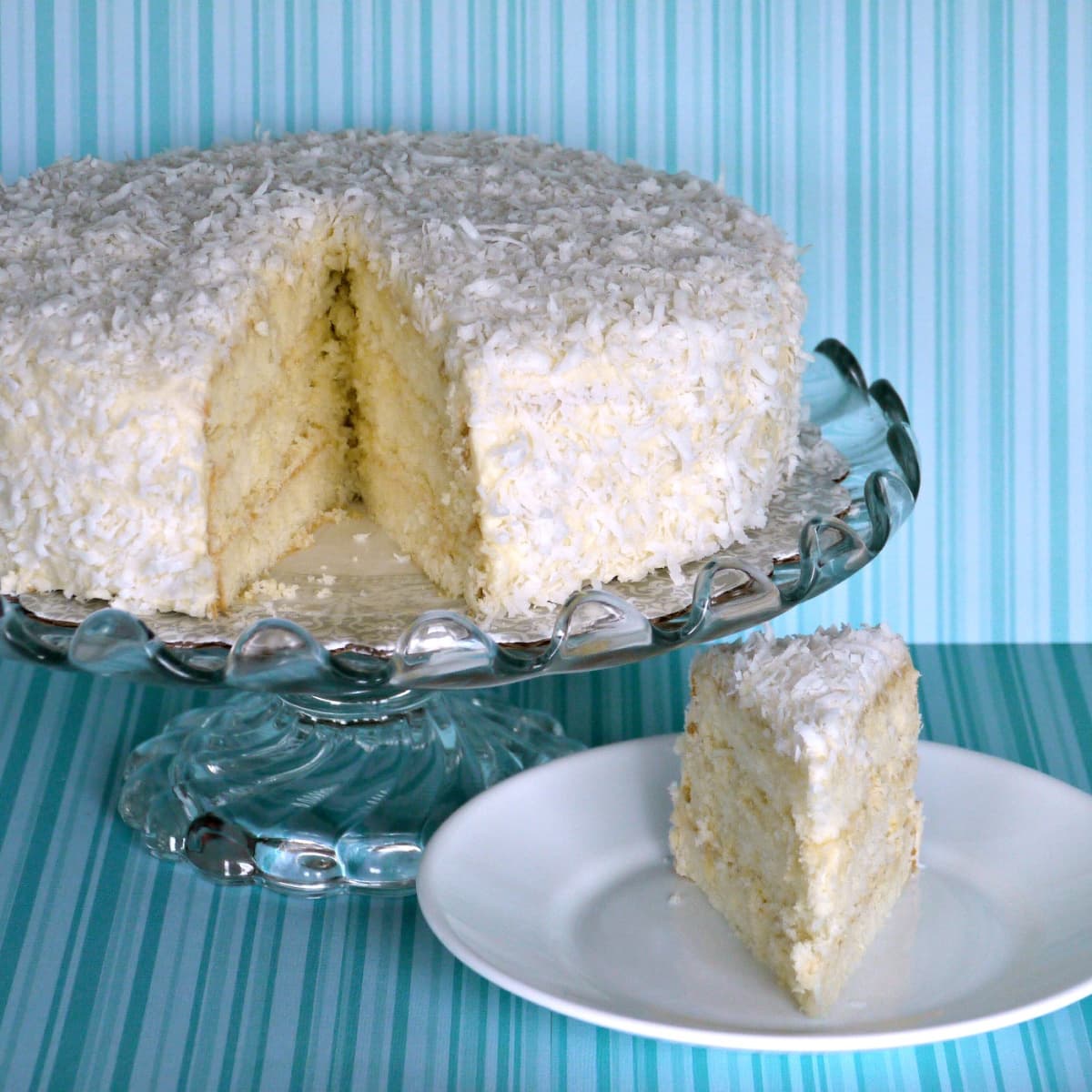
Jump to:
What's the Story on this Recipe?
We always come home after visiting the South with a list of recipes to learn and share. A few years back, Mr B and I traveled to Tennessee (again) and I returned with a yen to bake up rich, decadent, double- and triple-layer Southern-style cakes. Traditional, old-fashioned, fancy-pants cakes with rich layers and heavenly frosting and names like Hummingbird and Majestic.
First, I was determined to make triple-layer strawberry cake from scratch. Which I did.
And it was Fabulous.
So I took what I learned about the cake batter science from my strawberry cake and ended up with this amazing coconut layer cake. As in, delicate, tender, melt-in-your-mouth, loaded with coconut, light as a cloud Amazing.
If you are a coconut lover, you are going to love this cake!
Coconut Layer Cake Ingredients
All ingredients should be room temperature.
- Cake flour: It is vital that you use cake flour for this recipe. Cake flour is a finely milled, delicate flour that results in a fine crumb and a good rise. My personal cake flour preference is Bob's Red Mill Super Fine Cake Flour.
- I cannot stress this enough: when it comes to flour in baking, sift first, THEN measure.
- Egg whites: Eggs are easier to separate while they are cold, but egg whites should be at room temperature before you whip them for the cake.
- Sugar: Use plain granulated sugar.
- Butter: Use unsalted butter. If you only have salted butter, reduce salt added by ¼-teaspoon.
- Coconut milk: Use full-fat, unsweetened coconut milk. Do not use light coconut milk or coconut cream.
- Coconut: Use sweetened, shredded coconut. Avoid using coconut that is old or dry.
- Coconut extract: Coconut extract has a sweet, rich flavor similar to coconut milk.
- Sour cream: Use full fat sour cream. This recipe has not been tested with low fat or non-fat sour cream.
- Butter: Use unsalted butter. If you use salted butter, reduce the amount of salt used to ¼ teaspoon.
- Salt: Use fine table salt. It will dissolve more readily and evenly than kosher salt.
- Powdered sugar: (i.e., confectioners' sugar, icing sugar) is simply pulverized granulated sugar.
- Sweetened shredded coconut: You can also use unsweetened shredded coconut - the cake will still be plenty sweet.
- Baking powder
How to Make this Coconut Cake Recipe
Cake Layers
Position oven rack in the center (or just below center) of the oven. Preheat oven to 350°F (175°C). Grease and flour three 8-inch round cake pans.
HINT: Line the bottom of the pans with parchment rounds for easy release and clean-up.
Measure sifted cake flour, baking powder, and salt. Sift together three times and set aside.
Whisk together sour cream and coconut milk in a small bowl and set aside.
Using an electric mixer with a large mixing bowl, cream butter and 1 cup of sugar together until light and fluffy. Add coconut extract and mix to combine.
Add flour mixture alternately with coconut milk and sour cream mixture, beating after each addition. Remove bowl from mixer and set aside.
In a medium mixing bowl, beat egg whites until foamy. Add ½ cup sugar gradually, beating until meringue will hold medium peaks. (Medium peaks can hold their shape, but the peak curls over when the beaters are lifted.)
Use a clean spatula to gently fold beaten egg whites into batter. (Do this step by hand. Do not use a mixer.)
Pour the batter evenly into the three prepared cake pans. Bake layers in a preheated oven for 25-30 minutes (8" pans) or until a toothpick or skewer comes out clean.
Always test the cake before taking it out of the oven.
Allow cakes to cool in their pans over a wire rack for 10 minutes. Carefully tap out onto wire rack to cool completely.
Wrap layers in plastic and chill in refrigerator for at least an hour.
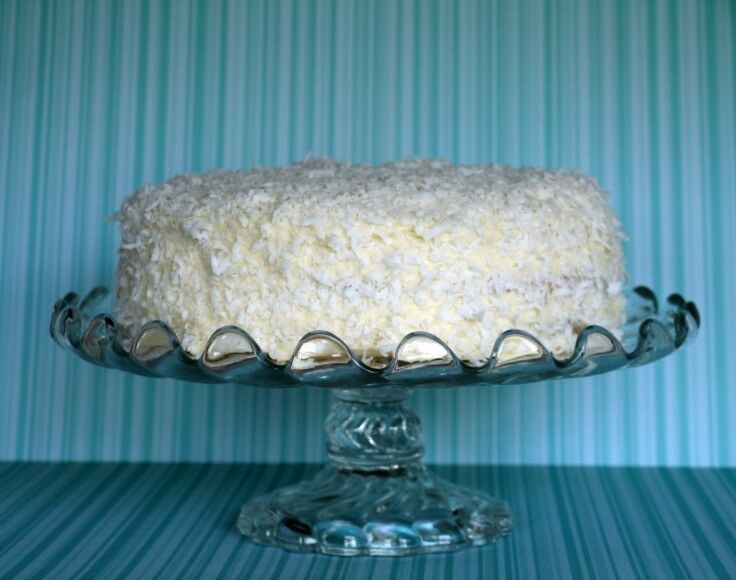
Coconut Frosting
Using an electric mixer, beat butter on medium-high until light and fluffy. Add coconut and vanilla extracts and salt and mix to thoroughly combine.
Slowly add powdered sugar, mixing well after each addition.
Add coconut milk, one tablespoon at a time time, beating on medium-high until fully incorporated.
Frost Cake
Once the cake is completely chilled, trim the layers. Spread the top of the bottom layer of cake with frosting. Add the middle layer and frost top. Add the top layer.
Apply a crumb coat to the entire cake. (A crumb coat is a thin layer of frosting that covers the top and sides of a cake.) Return the cake to the refrigerator for 10-15 minutes.
Frost the entire cake with a generous layer of frosting. Sprinkle flaked coconut over top and sides of cake before the frosting sets.
Substitutions
Easy Cake Flour Substitute*: If you can't buy/find cake flour, try this easy substitute. For each cup of cake flour, measure out 1 cup of flour, then remove 2 tablespoons from the cup. Add 2 tablespoons cornstarch, and sift together.
*Note: I have never made this particular cake using this cake flour substitute, so substitute at your own risk.
Homemade Powdered Sugar: To make powdered sugar, combine granulated sugar and cornstarch in a ratio of 1 cup to 1 tablespoon. Place them in a high-powdered blender (i.e., Vitamix, Blendtec) and blitz until the mixture is ground to a soft powder.
Equipment
Use the Right Cake Pans
The kind and quality of baking pans you use can have a great impact on the success of your cake. For this recipe, I recommend using three 8-inch stainless steel round cake pans, lined on the bottom with parchment rounds. (I love the weight of these pans!)
If you use glass or dark pans, or pour only two cake layers instead of three, you will need to adjust the baking time and/or temperature.
Glass cake pans: When baking cake layers in glass pans, lower the baking temperature to 335°F (168°C), and bake 8-10 minutes longer.
Dark cake pans: Generally, drop the baking temperature to 335°F (168°C) so the cake batter doesn't heat up and brown too quickly, especially on the bottom. Bake the layers 6-10 minutes longer, depending on your oven.
9-inch pans: 9-inch pans expose more surface area and bake faster, so you will need to adjust the temperature and time. If you only have a 9-inch pans, simply drop the baking temperature to 335°F (168°C) and bake for about 22-25 minutes.
Storage
Store cake on the counter in a covered cake plate or wrapped in plastic wrap. It will last about a week before it starts to get stale.
How to Freeze Cake Layers
Cake layers can be baked well ahead of time, then frozen for up to 3 months, until you are ready to frost them.
- To freeze cake layers, first bake and completely cool the layers.
- Wrap each layer individually in plastic wrap.
- Wrap each plastic-wrapped layer in aluminum foil.
- Use a permanent marker to label and dates the layers
- Bonus: place each wrapped, labeled layer in a reusable freezer bag.
Top Tips
How to Know When a Cake is Done
- The edges of the cake pull away from the sides of the pan.
- The cake springs back when gently pressed.
- When inserted near the center, a toothpick comes out clean.
- The internal temperature, measured on an instant-read thermometer, is 210°F (99°C).
- If you listen very carefully, you can hear the cake layers sing as they bake. You will heat a faint crackling or sizzling sound, as the steam from the liquid ingredients cooks out. As the cake gets closer to being done, the sound will become softer and slower, becoming a barely audible whisper when the cake is done.
Tips for Introducing Meringue into Cake Batter
The key to the success of this coconut cake is how and when you introduce the meringue (i.e., the egg whites beaten with sugar) to the rest of the cake batter.
Many recipes similar to this one have you make the meringue, take it to medium or stiff peaks, and set it aside while you make the rest of the cake batter. However, I've learned that you get a discernibly lighter cake if you mix up the batter before you whip up the meringue.
Meringue is basically a mixture of proteins and water. Air whisked into the egg white becomes trapped and surrounded by a network of proteins, and adding sugar stabilizes this protein network.
Making the meringue after the batter allows you to gently fold it in immediately after whipping it up. This way, the meringue's protein network doesn't have time to start breaking down or setting up, and more teeny tiny meringue bubbles make their way into your cake, ultimately making it lighter.
FAQ
The primary difference between cake flour and all-purpose flour is that cake flour has slightly less protein, which translates to less gluten in your cake, which means you will have a more tender cake.
Unless instructed otherwise in a recipe, always sift the flour first, and then measure it! (If you're wondering why, try measuring it first, sifting it, and then measuring again.)
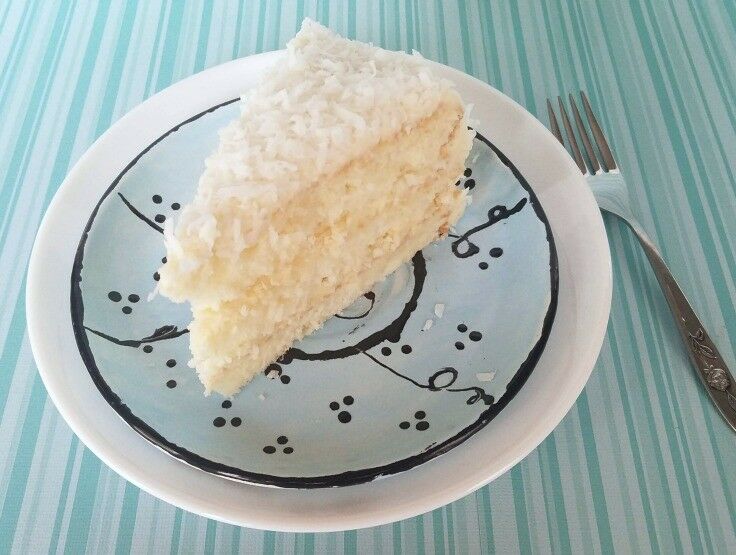
Serve Coconut Cake as is, or add a scoop of vanilla ice cream for a real treat!
More Cake Recipes
What to Serve with Coconut Cake
Coconut layer cake is a perfect dessert to top off a summer barbecue, spring shower, or winter party. (If you want to go with a full-tilt Southern menu, serve up some Nashville Hot Chicken, Memphis coleslaw, and fried green tomatoes for the main dish!)

Want More Free Recipes?
Subscribe to our newsletter to get family-friendly recipes and cozy living ideas in your inbox each week!
Find us on Instagram, Pinterest, and Facebook, too.
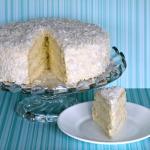
Coconut Cake with Coconut Buttercream Frosting
Equipment
- 3 8-inch round cake pans or 9-inch
- 1 Sifter
Ingredients
Coconut Cake Layers
- 3 cups cake flour measure after sifting
- 1 tablespoon baking powder
- ½ teaspoon salt
- 6 large egg whites room temperature
- 1½ cups white sugar divided
- ¾ cup unsalted butter softened
- 2 teaspoons coconut extract
- ¼ cup sour cream
- 1½ cups full-fat, unsweetened coconut milk (NOT coconut cream!)
Coconut Buttercream Frosting
- 1½ cups unsalted butter softened
- 2-3 teaspoons coconut extract
- 1 teaspoon vanilla
- ¼ teaspoon salt
- 6 cups powdered sugar sifted
- 5-6 tablespoons coconut milk
- 2 cups sweetened shredded coconut
Instructions
Cake Layers
- Position oven rack in the center (or just below center) of the oven. Preheat oven to 350°F (175°C). Grease and flour three 8-inch round cake pans. HINT: Line the bottom of the pans with parchment rounds for easy release and clean-up.
- Measure sifted cake flour, baking powder, and salt. Sift together three times and set aside.
- Whisk together sour cream and coconut milk in a small bowl and set aside.
- Using an electric mixer with a large mixing bowl, cream butter and 1 cup of sugar together until light and fluffy. Add coconut extract and mix to combine. Add flour mixture alternately with coconut milk and sour cream mixture, beating after each addition. Remove bowl from mixer and set aside.
- In a medium mixing bowl, beat egg whites until foamy. Add ½ cup sugar gradually, beating until meringue will hold medium peaks. (Medium peaks can hold their shape, but the peak curls over when the beaters are lifted.)Use a clean spatula to gently fold beaten egg whites into batter. (Do this step by hand. Do not use a mixer.)
- Pour the batter evenly into the three prepared cake pans. Bake layers in a preheated oven for 25-30 minutes (8" pans) or until a toothpick or skewer comes out clean. Always test the cake before taking it out of the oven. Allow cakes to cool in their pans over a wire rack for 10 minutes. Carefully tap out onto wire rack to cool completely. Wrap layers in plastic and chill in refrigerator for at least an hour.
Frosting
- Using an electric mixer, beat butter on medium-high until light and fluffy. Add coconut and vanilla extracts and salt and mix to thoroughly combine. Slowly add powdered sugar, mixing well after each addition.
- Add coconut milk, one tablespoon at a time time, beating on medium-high until fully incorporated.
- Once the cake is completely chilled, trim the layers. Spread the top of the bottom layer of cake with frosting. Add the middle layer and frost top. Add the top layer. Apply a crumb coat to the entire cake. (A crumb coat is a thin layer of frosting that covers the top and sides of a cake.) Return the cake to the refrigerator for 10-15 minutes.
- Frost the entire cake with a generous layer of frosting. Sprinkle flaked coconut over top and sides of cake before the frosting sets.
Notes
- The edges of the cake pull away from the sides of the pan.
- The cake springs back when gently pressed.
- When inserted near the center, a toothpick comes out clean.
- The internal temperature, measured on an instant-read thermometer, is 210°F (99°C).
Nutrition
This website provides approximate nutrition information for convenience and as a courtesy only. You are solely responsible for ensuring that any nutritional information provided is accurate, complete, and useful.
Thank you for visiting the Good Hearted Woman. Remember to bookmark this site, and come back soon!


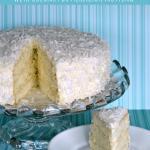
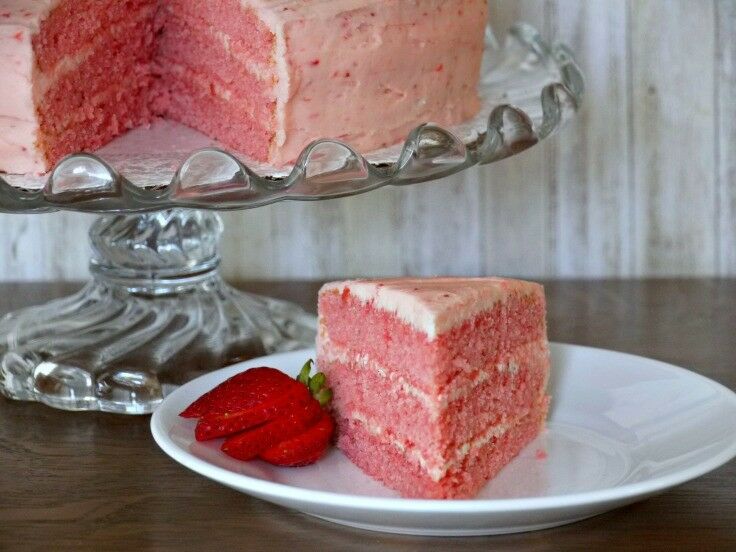

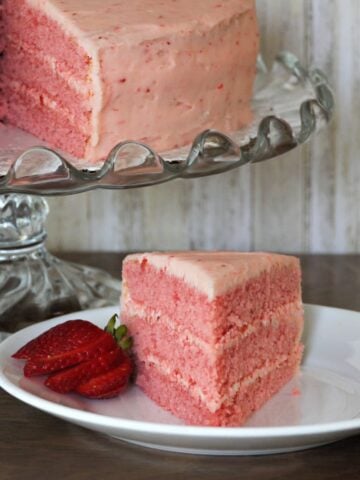
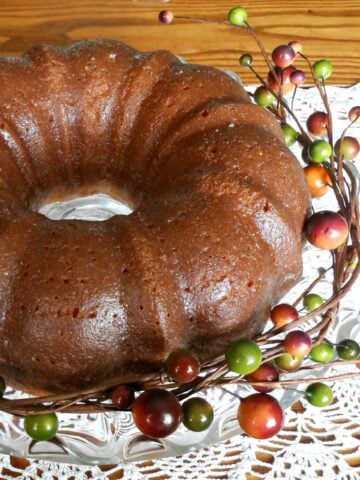
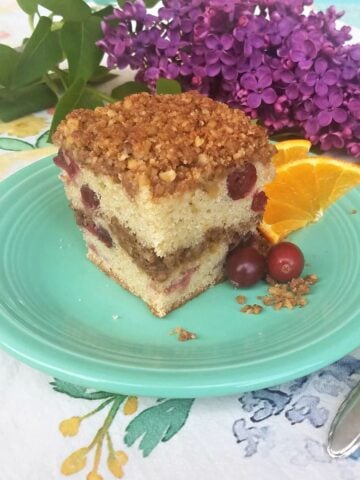
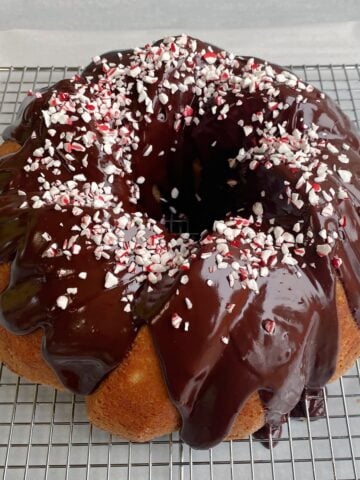
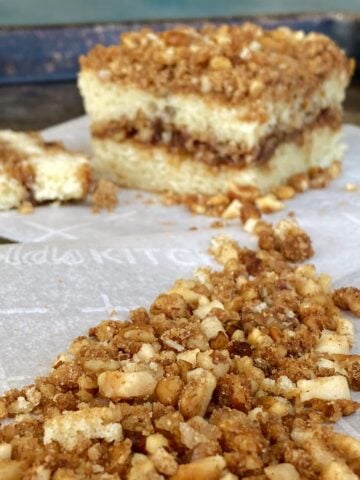
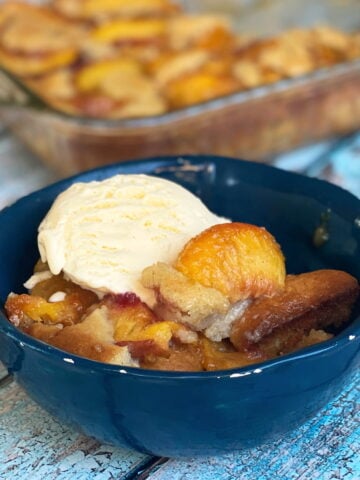
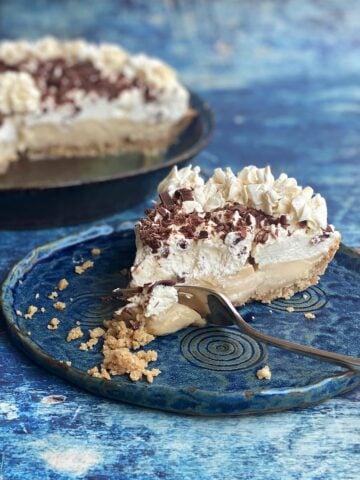
Dallas Victoria Williams says
So I am making this cake for the 1st time and I just took them out of the oven, the 3 layers look kind of thin, but light & fluffy? I am not sure if that makes sense, just wondering if this is normal. Thanks
Renée says
If you baked them in 9-inch pans, then yes, they will be pretty thin. 8-inch pans will held thicker layers.
Jane says
I made this cake for a homesick South Carolina friend. It was perfectly delicious and not at all difficult: just read the instructions through before you start.
I do have a question about 1 1/2 cups sugar, divided. Step 4 calls for creaming the butter and sugar but not how much of the sugar. Then step 6 says to add 1/2 cup sugar. I added all the 1 1/2 cups of sugar in step 4 so I needed more sugar for the eggwhites. It turned out fine (did I mention delicious!) but I was a little confused.
Renée says
Good catch, Jane! Yes, Step 4 under Cake Layers should read, "Using an electric mixer with a large mixing bowl, cream butter and 1 cup of sugar together until light and fluffy." Thank you - the recipe has been updated.
Genevieve says
Coconut cake? This looks amazing and super creamy. Super decadent too!
Michelle Jolene says
I'm currently not eating gluten, so I'm just here to live vicaiously though these scrumptious pics and read all the yummy ingredients. Oh, and I love coconut! Yummmmmmmmmmmmmm
Renée ♥ says
I wonder how this would turn out with Bob's GF flour mix?
Amber Myers says
Oh yum, I know I'd love this! It looks incredible! It would make a delicious dessert.
Victoria Kabakian says
Coconut cake is one of my FAVORITE types of cake! Your cake looks beautiful! I'd love a piece right now 🙂 haha
Anita says
This cake speaks to me. It needs to be baked! I'm a big lover of coconuts, so imagine how much I droll over this cake. Coconut cake + coconut buttercream. I'm sold!
Chris Collins says
I absolutely LOVE coconut cake and your version looks so delicious!!
Renée ♥ says
Thanks so much, Chris!
Scarlet says
This looks like such a light and lovely coconut cake. I can't wait to try it and I love that you use real butter for the icing!
Renée ♥ says
Thank you, Scarlet. We always try to keep things real!
Irina says
This coconut cake is a real perfection! It is just a dream cake for coconut lovers:) Bookmarking for later.
Renée ♥ says
Thank you for the kind words, Irina!
shayna says
Looks AAAMAAZING! Anything coconut and cake sounds like a dream!
Renée ♥ says
Thank you! I feel the same way!
Martha Cash says
Made this cake today for a birthday tomorrow. It concerned me right away when I saw the baked layers were fairly thin (about an inch thick each). Went over the recipe over and over to see where I could have gone wrong. I've been making cakes for years, and never had this happen. It called for a tablespoon of baking powder, so I know it had enough leavening. I wondered why the yolks were not called for in the recipe, as they would have added to the cake rising. I went ahead and iced it, regardless, hoping it would still taste good. It was awful. Layers were condensed, and did not taste good at all. We ended up throwing it to the animals outside (we live in the mountains - and no.... we are not high elevation wise).
So disappointed, and was wondering if anyone else ran into this problem.
Renée ♥ says
I'm so sorry, Martha. I can't imagine what went wrong. The yolks are not necessary for the leavening: it is the meringue that does the trick, and it is important to carefully fold it in after the batter is otherwise complete, but I'm sure you did that. I haven't had a single issue with this cake, but I'd love to know what happened to you so we can pass the info on to others. Is it possible that you used regular flour or coconut cream? Either one would dramatically affect the outcome.
Gigi says
Looks amazing! However, I have a question when making the frosting: Is the Coconut Milk the “full -fat, unsweetened” type (the same type used to make the cake)? Just want to make sure. ?
Renée ♥ says
That's a great question, and yes, it is the same kind of coconut milk. In fact, you end up using almost exactly one whole can of coconut milk for the cake and frosting together.
Kerry says
Wow that looks so good Renee! I love a good piece of cake 🙂 The strawberry cake is especially intriguing to me!
Waz says
I'm not normally a big fan of coconut cakes, but yours looks especially enticing! I'd love to try making a vegan version of this. Oh, and that strawberry cake... the pink is so pretty!
Erin @ Platings and Pairings says
My mom would love this cake! She's a huge coconut fan! I'll have to make it for her next time she's in town for sure.
Cristina says
I'm one of those people who's obsessed with everything coconut-flavoured!
I love how full of coconut and fluffy this cake looks! I pinned it for later.
Michelle says
Oh my. My husband and sons would LOVE it if I made this. They’re huge coconut lovers. People are always surprised when they see my kids go after coconut pie, instead of chocolate or cherry. Lol. Southern recipes are the best ?
Leah Ashley says
Oh, this looks and sounds amazing!! I can't wait for spring I am totally going to make this!!
Mary says
That cake looks amazing! I love the sound of that coconut buttercream frosting!
Renée ♥ says
The frosting is delicious, Mary! I may or may not have been snacking on graham crackers & leftover frosting for days now. ?
Andrea Metlika says
I love it when I get the cake baking bug. Looks like this cake is my next one to make.
Renée ♥ says
Let us know how it turns out!
Ghastly Girl says
I've never really been a fan of coconut flavor. It makes me so sad every time I see a coconut cake though. They are also SO pretty! My taste buds need to get with the program lol.
Renée ♥ says
I totally understand. My mom doesn't like coconut either, no matter how delicious the delivery method is. ?
Pech says
This cake looks sooo good! It looks light but rich at the same time!
Kelly Anthony says
This cake looks beautiful and delicious. I wish I had a slice of this right now. Love love love coconut cake!
Catherine @ To & Fro Fam says
I LOVE coconut desserts, and it looks like you've captured the best of why here: light and fluffy, sweet and creamy, all combined in the perfect cake!
Cliona Keane says
This sounds and looks amazing! I can just imagine serving it up at my next family party.
Katie says
This cake is beautiful and sounds so delicious with all of the various coconut angles- from the actual coconut, to the flavoring and the coconut milk. So delicious!
Renée ♥ says
It is amazing, Katie! Thanks for stopping by!
beth says
This looks amazing! Can't wait to try it!
Kelsey says
Your cakes, especially the layers, are beautiful and this looks heavenly- I love the look of coconut topping too. Drooling!
Belle says
Man! That looks AMAZING! I seriously want to have a slice right now.
Annaliese says
This looks DIVINE! Don't think I've ever pinned a recipe on Pinterest so fast!!!
xoxo A
http://www.southernbelleintraining.com
Tessa says
This looks absolutely delicious! This recipe actually has me thinking ahead to Easter and entertaining. I can't wait to try it!
Renée ♥ says
This would make a perfect Easter cake! Now you've got Me thinking!
Taylor says
Oh my goodness this looks amazing, so excited to try this!!
Chloe @callmecoco.co says
This cake looks absolutely delicious, I love the taste of coconut